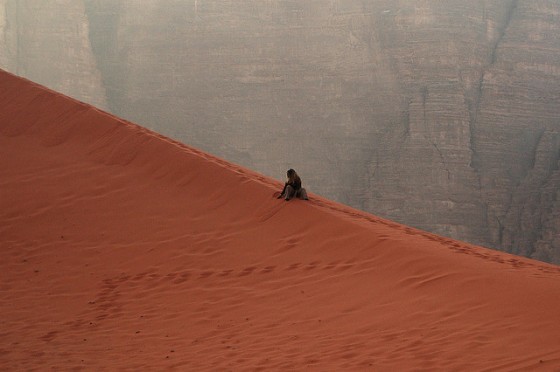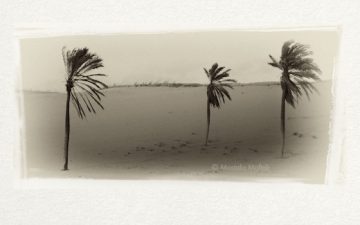 As both a cultural and natural marvel, if Wadi Rum’s candidacy as a UNESCO World Heritage Site is approved, sustainability will be easier to achieve.
As both a cultural and natural marvel, if Wadi Rum’s candidacy as a UNESCO World Heritage Site is approved, sustainability will be easier to achieve.
Concerned organizations have taken huge leaps towards preserving Jordan’s culture and wild heritage. The Royal Society for the Protection of Nature have set aside an additional nine protected areas in a move that merges conservation with eco-tourism, and are also trying to establish a program to protect their gray wolves. Also, in addition to three existing UNESCO World Heritage Sites, they submitted a bid at the end of 2009 to establish Wadi Rum as both a cultural and natural heritage site.
What makes Wadi Rum so special?
A part of the country’s “golden triangle,” Wadi Rum lies 300km south of Amman and contains 720 square kilometers of desert wilderness. Bedouin and numerous wild animals live there, including the Arabian Oryx, according to the Jordan Times.
The region is mentioned in several historical and holy texts: Ptolemy called it Aramwa and Noah’s son Iram was said to have come from there.
“Iram is also mentioned in the Holy Koran, linking it with a tribe called Ad, whose name was discovered in an inscription on an ancient temple at the site,” archaeologists told the paper.
Also present are Nabatean inscriptions.
“Archaeological finds in the area indicate that Wadi Rum has been inhabited as far back as prehistoric times, with its unique landscapes and water sources offering a place of refuge for those traveling from the Gulf to the Levant,” according to Jordan Times.
Criteria
In order to establish a UNESCO site, representatives currently in the country on a nine-day evaluation trip must be satisfied that the following three criteria are met:
“The site must have outstanding universal value…integrity and authenticity…[and good] site management.”
The nomination was prepared jointly by the Ministry of Environment, and the Tourism Ministry, the Aqaba Special Eco Zone, as well as the US AID/Jordan Tourism Development Project called Siyaha.
Officials hope that if the site is named a mixed UNESCO site next year in Bahrain, they will be able to use the designation to bolster jobs and improve awareness among locals of the area’s importance.
And this in turn, they expect, will ease the task to sustainably manage both the cultural and natural beauty that makes this site such a strong candidate for the United Nations’ esteemed recognition.
:: Jordan Times
More beauty from the Middle East:
Israeli Researchers Discover Coral Reefs In The Mediterranean
Where Have All The Iranian Leopards Gone?
Climbing God’s Mountain in Sinai
image via amerune




I think the Carmel Mountain UNESCO bioreserve in Israel is a mixed heritage site as well. There is a large Druize population living there.